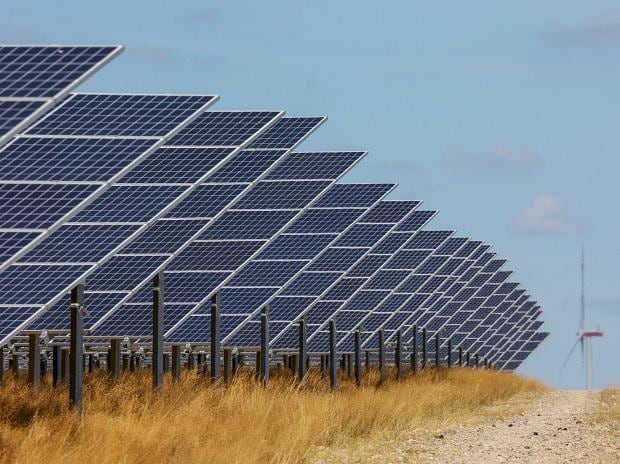The union minister for power, new and renewable energy said on Monday, India will have more than 65 per cent of its power generation from renewable energy sources by 2030. He also said initiatives by the Centre including the Production Linked Scheme (PLI) scheme will ensure India to have a 90 Gw solar module capacity.
The minister said India already has 42 per cent of non-fossil fuel capacity (including hydro power) as of 2021. “Even 65 per cent is an understatement. Our established capacity today is 170-odd Gw of non-fossil. We have about another 80 Gw under construction. That makes it 250 Gw,” he said while speaking at the Aatm nirbhar Bharat conference of CII.
The minister said green hydrogen will also provide a filip to renewable capacity addition.
“Each unit of hydrogen generation requires 25 Giga Watt of renewable energy. With India planning 35-40 million tonne Green hydrogen capacity by 2030, there will be huge demand for renewable energy,” Singh said.
The minister also said, he is considering giving “deemed distribution licence in renewable energy space.”
On solar manufacturing, Singh said the Centre’s initiatives will ensure India will have 90 Gw of solar module manufacturing facility.
The Centre is soon coming out with the second tranche of the Solar manufacturing PLI scheme totaling Rs 19,000 crore. “High efficiency cells and modules will be incentivised. We will rule out low efficiency cells and modules. We will be give the industry a window for transition,” said Singh.
Indu Shekhar Chaturvedi, Secretary, Ministry of New and Renewable Energy said, “For PLI 2, we are confident that the bid will be issued within a week….the scheme guidelines have already been published”.
Chaturvedi said that by 2026, India is looking at the capacities of 38 Gw in Polysilicons, 56 Gw in Ingot and Wafers, 70-80 Gw in cells and 90-100 Gw in modules. “Our targets are huge, if you consider the 500 Gw plans we have (by 2030), which does not take into account the hydrogen plans. We have to install approximately 25-35 Gw every year. The outlook for solar manufacturing seems good,” said Chaturvedi.
The Union Cabinet last month approved the Rs 19,500-crore proposal of the Ministry of New and Renewable Energy (MNRE) for the second tranche of the ‘production-linked incentive’ (PLI) scheme for solar equipment manufacturing.
This is part of ‘National programme on High Efficiency Solar PV Modules’ for achieving manufacturing capacity of giga watt (Gw) scale in high efficiency solar photovoltaic (PV) modules
In the first tranche of tendering, MNRE received close to 50 Gw of bids against a PLI sanction of Rs 4,500 crore and RfP of 10 Gw. It received close to 18 bids from a range of companies — Coal India, L&T, Vikram Solar, Megha Engineering and several new companies. The winners were Reliance New Energy, Adani Infrastructure and Shirdi Sai.
The corpus was increased to Rs 19,500 crore under the Union Budget 2022-23 to accommodate the large number of bids.
The new round of the PLI will have three different schemes for different product categories, this paper reported recently. Of the allocated corpus, the highest share of Rs 12,000 crore could go to end-to-end manufacturing of ‘polysilicon-wafers-cells-modules’ (raw material to finished product).




